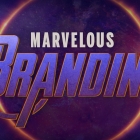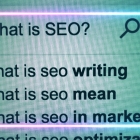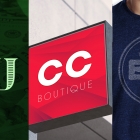Gamification: Make it Fun and they Will Come!
Gamification is the new hotness and everyone and their nerd is talking about it!
The term “gamification” refers to the use of elements found in video games that have been translated into web design. Normally, you find gamification in customer-oriented web and mobile sites being used as a tool to get people to engage with a site and do stuff like take surveys, shop or read articles. It’s a great tool for marketers to use and it takes advantage of people’s natural desire to do fun stuff and get rewards.
Cool, right?
The Internet would be way more exciting if every website was like a game, wouldn’t it?
Shopping for things like car insurance would be the Best! Thing! Ever! instead of a boring and annoying task. The good news is that this is actually happening and businesses are starting to realize that if they gamify their websites a little bit, people will come back.
Now this is not to say that when you shop for car insurance in the future you’ll have to shoot some police and beat up a virtual hooker (like you can do in the game Grand Theft Auto) to get a good rate. It’s also not about hand-eye coordination and arcade style gaming. Instead, it’s web designers starting to take notice of what makes games so enjoyable and easy to navigate, and they’re applying these same principles to the websites they’re creating.
For example, part of what makes games so enjoyable is their highly usable and intuitive interface. Life is a lot more fun when you don’t have to think too much about what you’re doing, isn’t it? We humans don’t like to mentally strain and concentrate unless we absolutely have to—especially when trying to get around a website.
When a site is hard to navigate, or if it’s just plain boring, we lose our patience and we’re likely to click away if we feel we’re wasting too much of our valuable brainpower on something. The site ends up with traffic, but few repeat visits.
Now take that same level of mental strain and concentration and it becomes a lot more attractive and fun if it’s wrapped in the context of a game.
Games are visually attractive and engaging, which is a huge element of game design that web designers can use to help hook people in. When you’re playing a game, the content is delivered in a way that maintains the narrative—it keeps you involved and invested because it doesn’t break away from the story you’re engaged in. Web designers can do the same thing to toss a little pizzaz into the mix. Add to that a streamlined user experience and you’ve got a gamified website, GLAD WORKS friends!
A great example of this can be seen in Nike+. With compatible personal GPS transceivers (iPhone, Nike SportWatch GPS, Nike SportBand, etc) the website will give real-time feedback through the device, as well as provide a database to store that info. You can save your routes for your complete run history, and set goals. You can then go back and compare your times from those routes over time, and track your progress. The website also provides guidance as to what the next step of progress might be for a training regime.
Most engaging however is Nike’s promotion of the social aspect of running. On the front page is a “What’s happening now” section that displays the most recent results and activity in your country. Not only that, but you can also compete against friends and contacts, essentially “racing” them virtually. Nike+ will also do “Facebook broadcasting,” making wall posts that show the details of your runs. So, just by using the app and linking it with Facebook, users will be doing bottom-up marketing every time they sync with Nike+.
Nike+ is just one example of what is rapidly emerging as a major trend in website design. Gamification can range from a simple points-based ranking system that leverages the desire for achievement, to using effective web navigation tools like lightboxes or carousels to reduce page clutter and end-user confusion. If you don’t know what those things are, that’s okay. We can explain it to you when you come in to have us gamify your website for you.
Far from being an untested tactic, gamification has been around since forever—way before the Internet was even a twinkle in our eyes. Remember the McDonald’s Monopoly game, for example? Or, how about when you were a little kid and you get a gold star on your chore chart because you finally dragged that moldy grilled cheese sandwich out from under your bed? Gamification works on those same old principals that people have been using to motivate each other for eons.
What is new, however, is applying these same mechanisms of positive reinforcement and interaction to what were previously very static and mundane one-way streets of information dissemination. With the right strategy, gamification can greatly improve the way users experience your website. Not only is a fun and rewarding user experience great for PR, it just might inspire people to do business with you again and again.

 An agency-eye view of Marketing, Advertising, Branding, Design & Media.
An agency-eye view of Marketing, Advertising, Branding, Design & Media.




